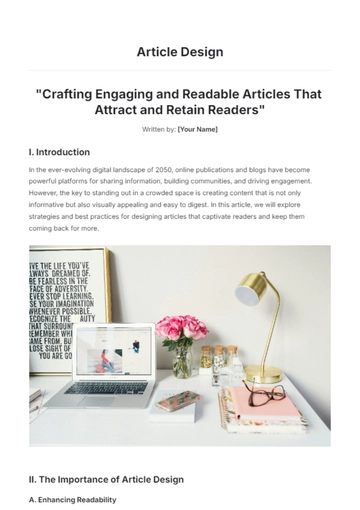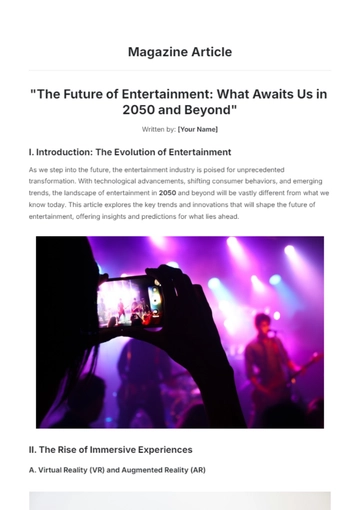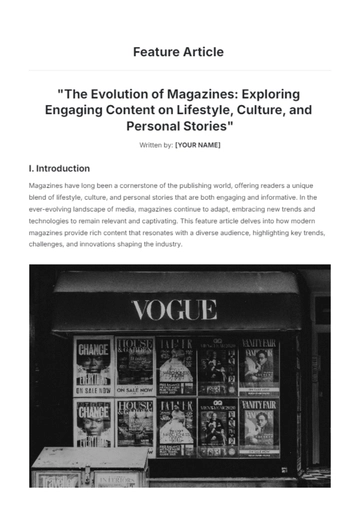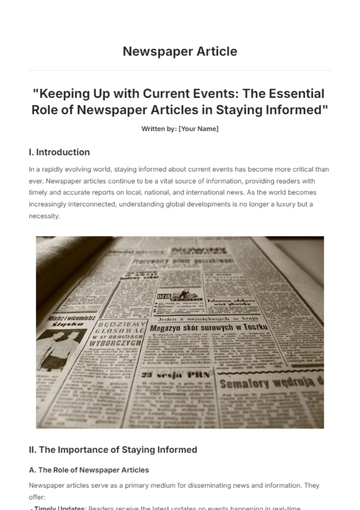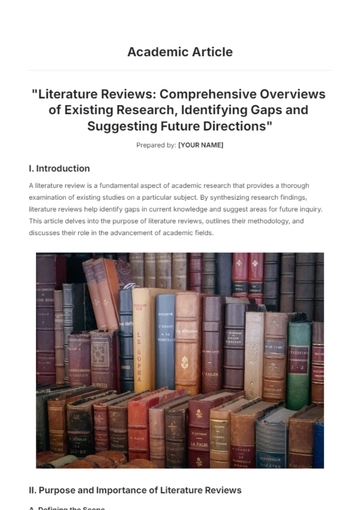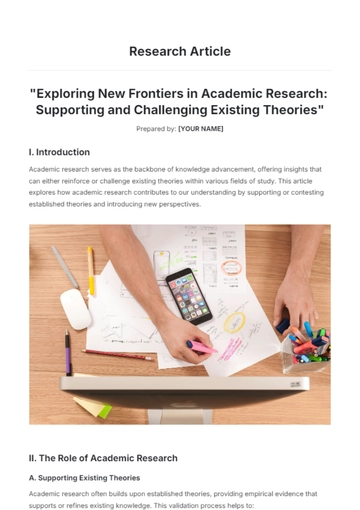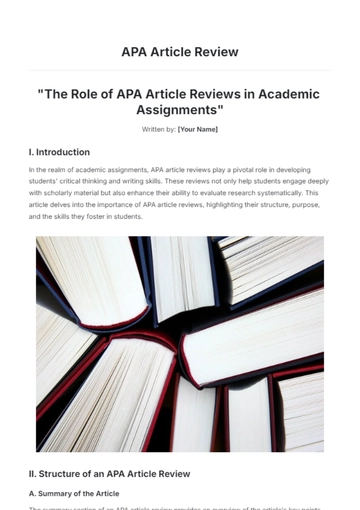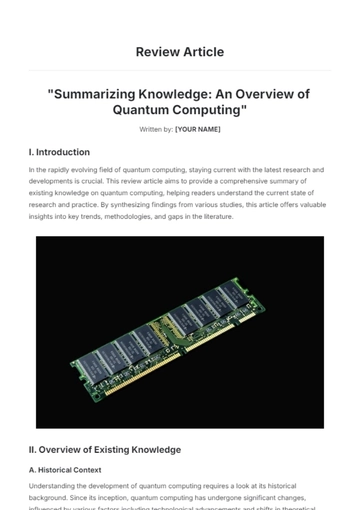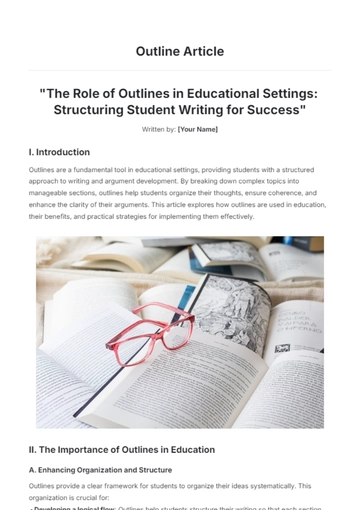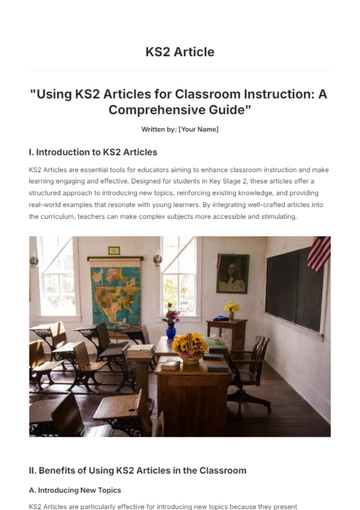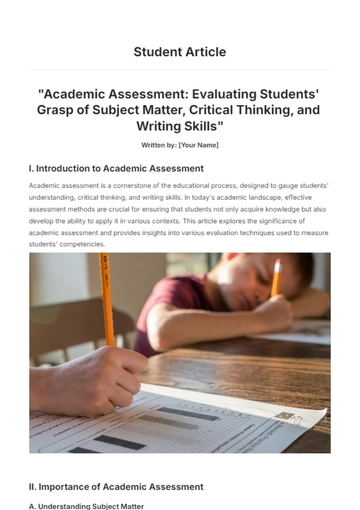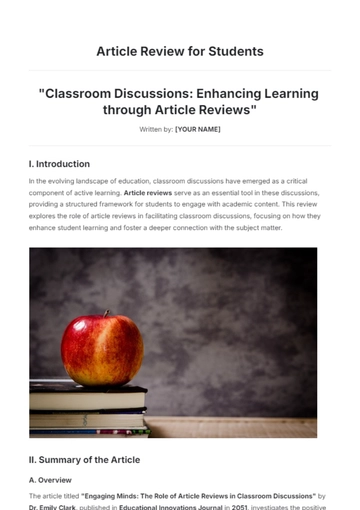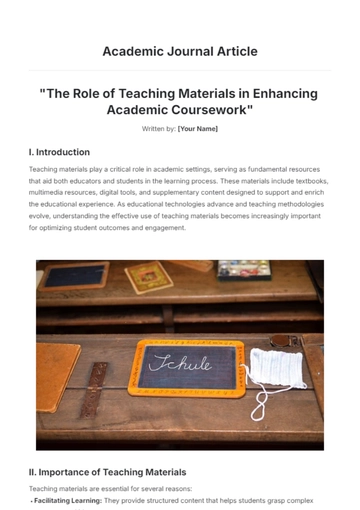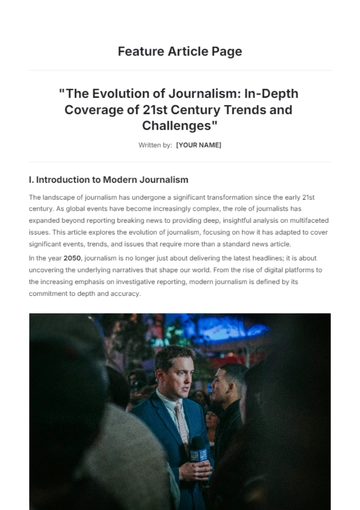Journal Article about Education
Prepared By: [YOUR NAME]
Date: [DATE]
I. Abstract
This Journal Article explores the impact of interactive technology on student engagement in secondary education. Through a mixed-methods approach, including surveys and classroom observations, the research examines how interactive tools influence student participation and motivation. Results indicate a significant increase in student engagement when interactive technologies are utilized. The study concludes that integrating such technologies into the classroom can enhance learning outcomes and recommends strategies for effective implementation.
II. Introduction

The integration of technology in education has become increasingly prevalent, with interactive tools promising to enhance student engagement and learning outcomes. This study investigates the effectiveness of interactive technology in secondary education settings, focusing on how these tools affect student participation and motivation. The research aims to address the following questions:
III. Literature Review
Previous research has consistently highlighted the transformative potential of technology in educational practices. The integration of interactive tools into the classroom has been shown to positively influence student motivation and participation. For example:
However, despite these promising findings, there remains a gap in the literature concerning the specific types of interactive technology that yield the best results in different educational contexts. Most existing studies focus on general outcomes without delving into the nuances of:
This study examines interactive technologies' impact on secondary student engagement, identifying effective tools and strategies, considering teacher roles, and aligning tech use with curriculum goals.
IV. Methodology
The study employed a mixed-methods approach, combining quantitative surveys and qualitative classroom observations. A sample of 50 teachers and 200 students from five secondary schools participated. Surveys measured student engagement levels before and after the implementation of interactive technology. Classroom observations recorded student interactions and participation during technology-enhanced lessons. Data were analyzed using statistical software for quantitative data and thematic analysis for qualitative data.
V. Results
The survey results demonstrated a significant impact of interactive technology on student engagement, showing a 30% increase following its introduction. This surge in engagement was further supported by classroom observations, which revealed noticeable improvements in student behavior and participation. Key findings include:
In addition to these quantitative findings, qualitative feedback from teachers highlighted several benefits:
VI. Discussion
The findings suggest that interactive technology can significantly enhance student engagement in secondary education. The increased participation and motivation observed align with previous research on the benefits of educational technology. The study also identifies best practices for implementation, such as providing adequate training for teachers and ensuring that technology is used to complement, rather than replace, traditional teaching methods.
VII. Conclusion
Interactive technology has the potential to transform secondary education by increasing student engagement and motivation. Educators should consider integrating these tools into their teaching practices, with a focus on effective implementation and training. Future research should explore the long-term effects and the impact of different types of interactive technology on diverse student populations.
VIII. References
Smith, J. (2050). The Role of Interactive Technology in Enhancing Student Engagement. Educational Technology Journal, 45(2), 123-135.
Jones, A. (2051). Motivation and Participation in the Digital Classroom. Journal of Educational Research, 78(4), 456-469.
Journal Article @ Template.net



